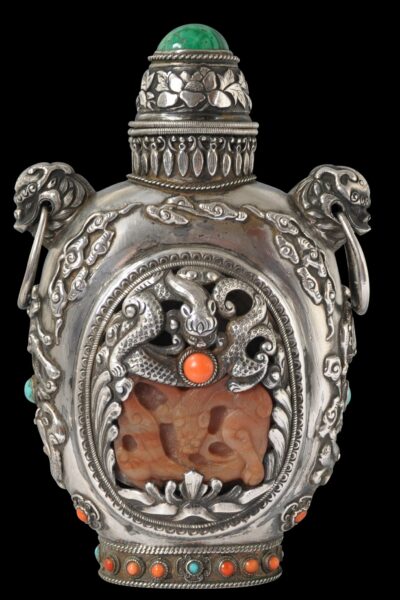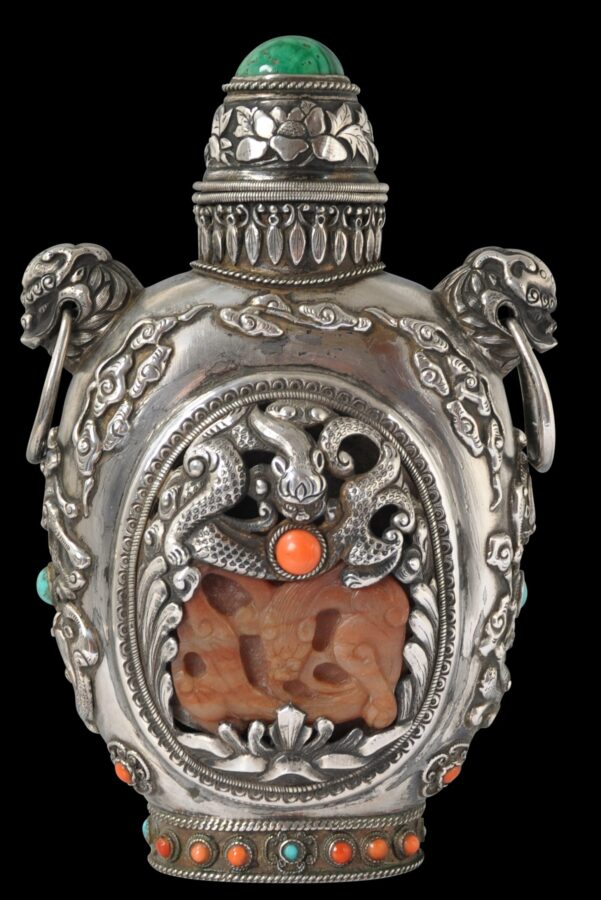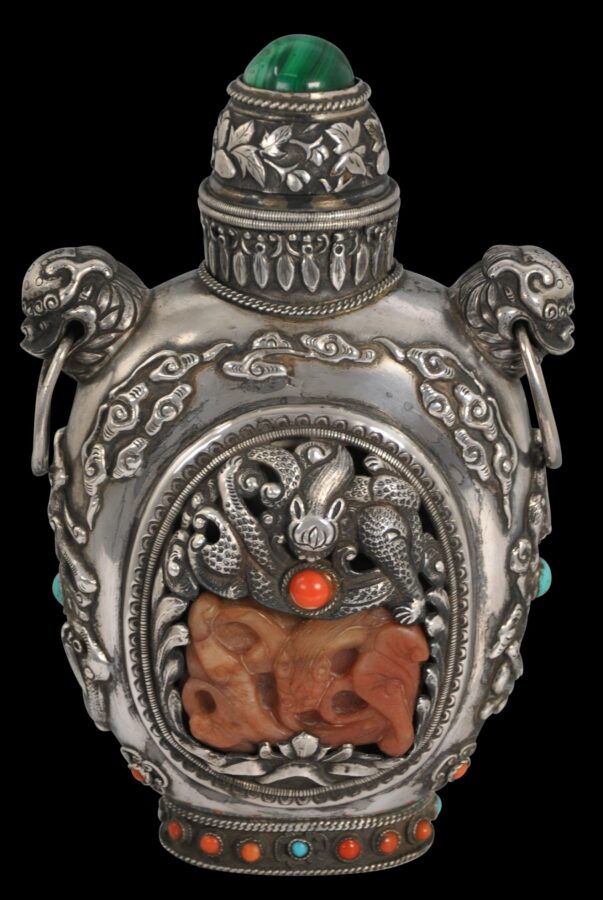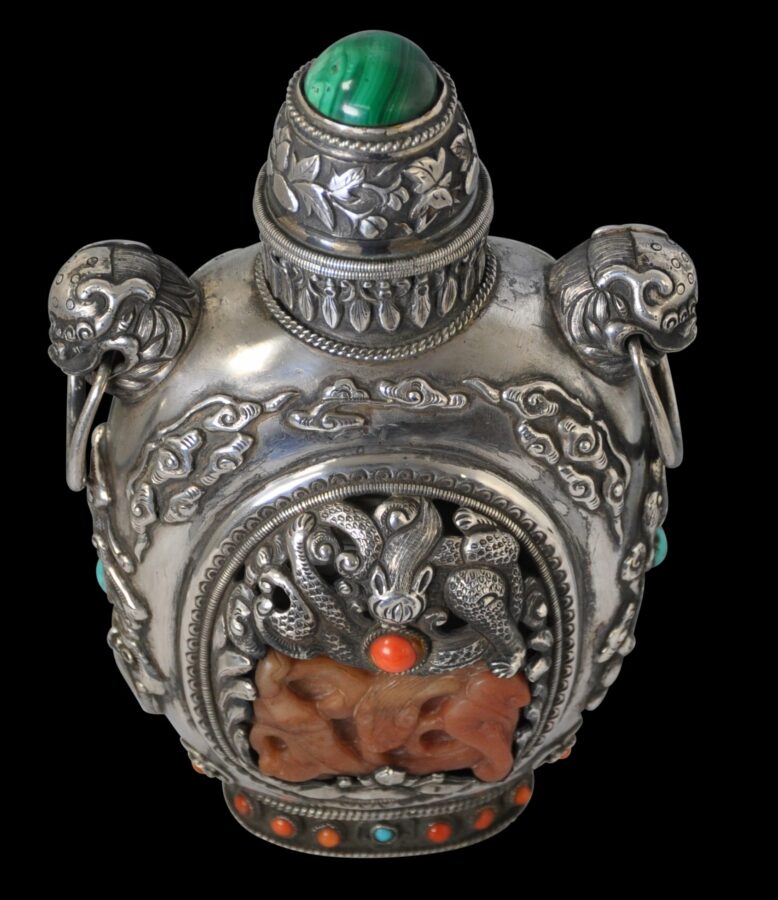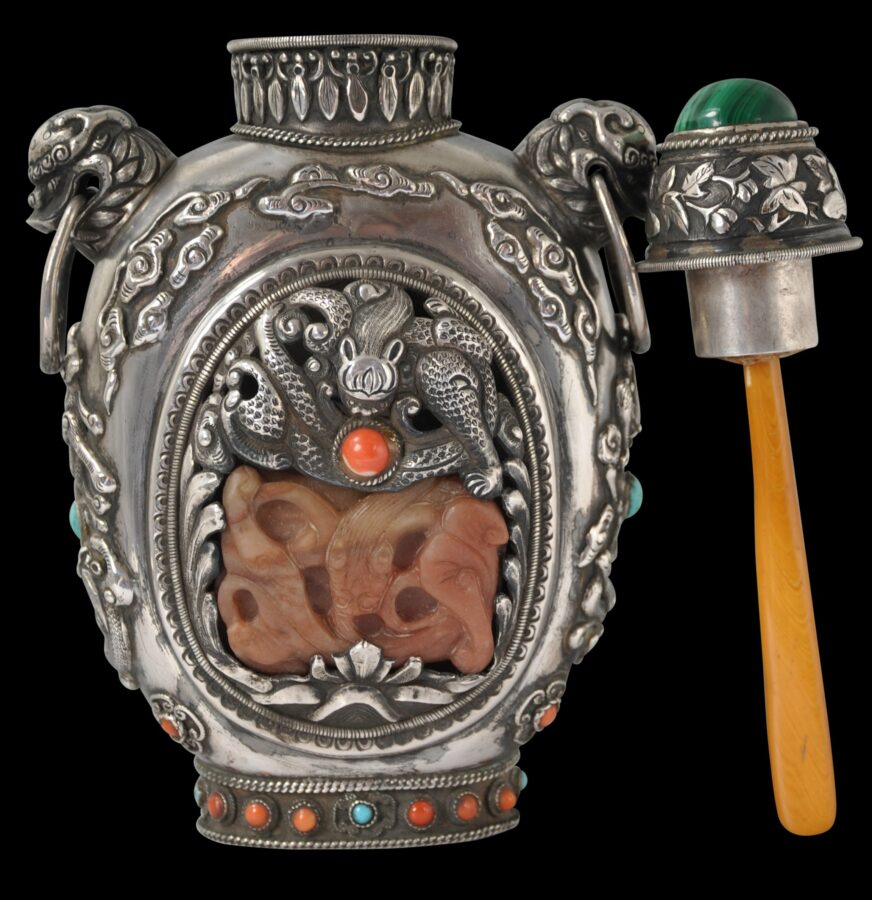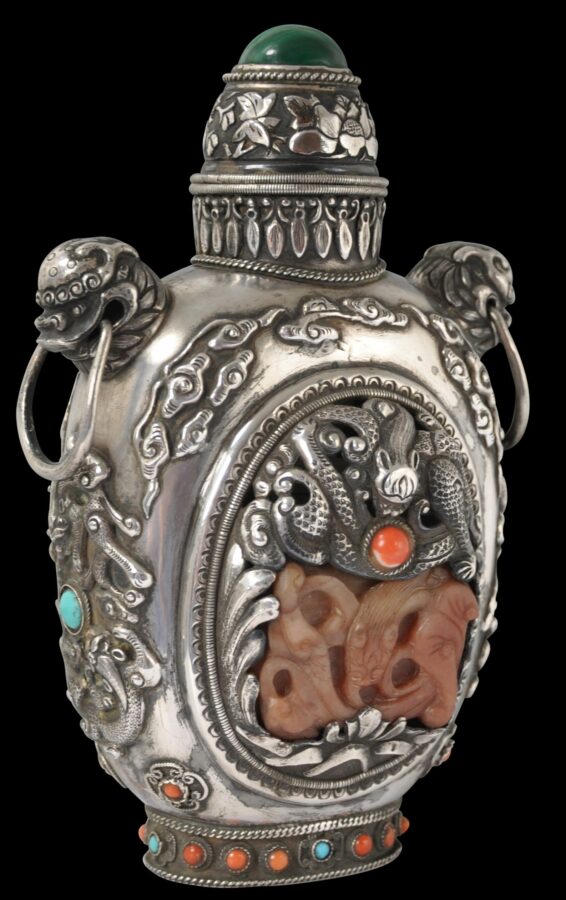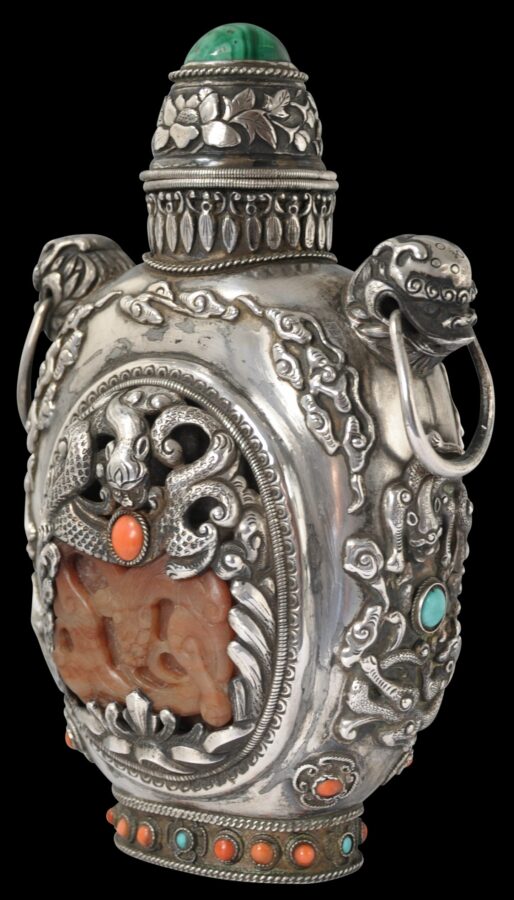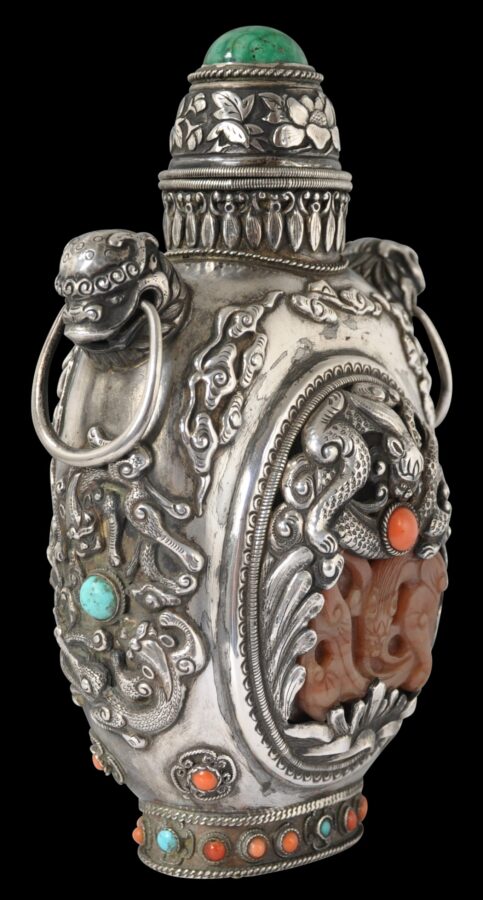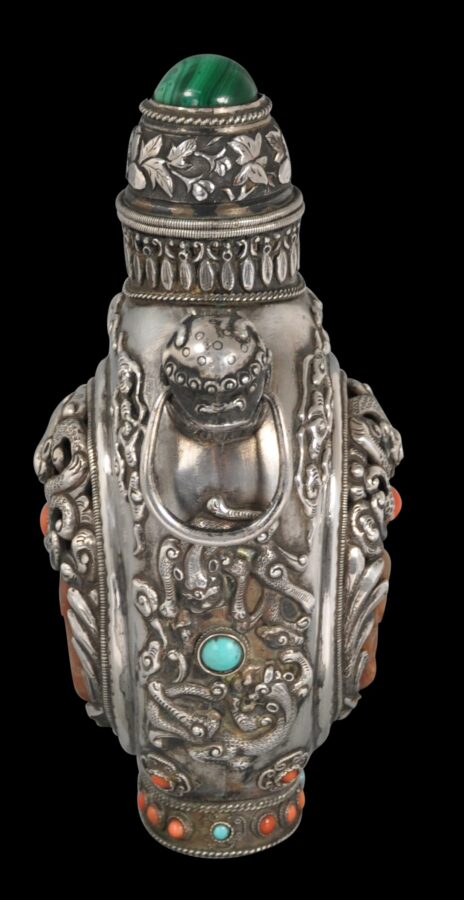This large silver snuff bottle would have been commissioned in Mongolia as a presentation gift.
It is made from silver that has been cast and chased. Front and back are decorated with central pierced silver panels of a mythical beast with a feline head, mounted with a coral cabochon, and over a panel of russet jade similarly decorated. The vessel stands on a foot that is inset all the way round with coral and turquoise cabochons.
The shoulders are mounted with the heads of fu-dog style beasts from which silver loop handles are suspended.
The neck is decorated with lappet-like motifs, and the stopper is beautifully chased with chrysanthemum motifs, and surmounted by a large domed malachite cabochon. Inside there is a horn spatula with a beautiful honeyed patina.
Snuff originally was introduced to China by European traders and missionaries. It became fashionable in the Qing court and it became common for emperors to give fancy and expensive snuff bottles away to courtiers and foreign guests.
The exchanging of snuff bottles has long been a traditional part of Mongolian culture. When Mongolian men greet each other on important social occasions and especially at Lunar New Year, they exchange snuff bottles as a sign of mutual respect and harmony. Additionally, expensive snuff bottles were presented to dignitaries as a way of earning favour and respect.
The tradition in Mongolia dates to the 17th or 18th centuries. Snuff bottle use was imported from China but in Mongolia the practice of snuff bottle presentation evolved in a manner more elevated and extensive than in China.
Today, Mongolians still greet each other with snuff bottles. Mostly they are of conventional snuff bottle size, and so are quite small. The example here, which is at least several times larger than a normal snuff bottle, suggests that it was intended for a particularly important recipient, or was given by a particularly high-ranking official.
The example here is in excellent condition.
References
Pal. P., The Art of Tibet, The Asia Society, 1969.
Tsultem, N., Mongolian Arts and Crafts, State Publishing House, Ulan-Bator, 1987.


